#Wakhi family
Photo

Afghan family inside their traditional pamiri house, Badakhshan province, Khandood, Afghanistan. Taken on August 13, 2016.
PayPal Donation: [email protected]
#Eric Lafforgue#Afghan#Wakhan#Wakhi family#Wakhi#Pamir#Pamiri House#Wakhan Corridor#Badakhshan#Afghanistan#2016
63 notes
·
View notes
Text
IN PICTURES | REMOTE PLACES | AFGHANISTAN
A New Road To An Inaccessible Land

— By Simon Urwin | 2nd July 2021
Once an isolated region barely touched by the hands of time, Afghanistan's Wakhan Corridor stands on the brink of great change with the building of a new road linking it with China.

On the Cusp of Six Borders
Bordered by China, Iran, Pakistan, Tajikistan, Turkmenistan and Uzbekistan, the Islamic Republic of Afghanistan lies at the very heart of Asia. Home to more than 32 million people, a quarter of its population lives in large urban centres such as Mazar-e Sharif (pictured), located 320km north-west of the capital Kabul. The fourth-largest city in the country, its centrepiece is the Shrine of Hazrit Ali – a masterpiece of Islamic architecture, which, according to local legend, is the burial place of Ali, the cousin and son-in-law of the Prophet Muhammad. The shrine is also renowned for its flocks of white doves. Locals believe that a small speck of another colour on a bird's feathers will instantly turn pure white when in the sacred building's vicinity. (Credit: Simon Urwin)

A Remote Corridor
Some 600km to the east of Mazar-e Sharif, the Wakhan Corridor (pictured) is a world apart from the rest of the country, both culturally and geographically. This 350km-long panhandle, in the region of Badakhshan, sits at the convergence of three of the world's major mountain ranges: the Hindu Kush, the Karakoram and the Pamirs – known as the Pamir Knot. "This is about as far away from the noise, the traffic and the muezzin's call to prayer of urban Afghanistan as you can get," said James Willcox of untamedborders.com, one of just a few adventure travel companies in the world that arranges trips to the region. "It is barely habited and hard to get to; few people even know of its existence. It's undoubtedly one of the remotest, and most beautiful places in the whole of Asia." (Credit: Simon Urwin)

A Rural Life
Scattered along the Wakhan Corridor are small rural settlements like Khandud (pictured), their simple houses made of stone, mud and timber. Some of the larger villages are connected by a single dirt track, often made impassible by the waters of the River Panj. "Very few people have their own car in the Wakhan, but we have community transport – as well as donkeys, and our feet, of course," said Azim Ziahee, a resident of the market town of Ishkashim, located 80km away at the Corridor's western end. "The Wakhan still remains very cut-off though. Some villages are more than four days' walk to Ishkashim. The nearest big town from here – Dushanbe, the capital of Tajikistan – is a three-day drive. The isolation keeps the corridor like a time capsule. We look over to the border towards Tajikistan, with its electricity, paved roads and mobile phone signal, and say that it's like looking 100 years into the future." (Credit: Simon Urwin)
Home of the Wakhi
For more than 2,500 years, the Wakhan Corridor has been the homeland of the Wakhi people and is now home to a population of around 12,000. While the majority of Afghans are conservative Sunni Muslims, the Wakhi are Ismailis, who belong to the Shia branch of Islam. Here, women do not wear the burqa, and there are no mosques; instead, the Wakhi visit jamatkhanas (houses of prayer that also serve as community halls for conducting village business). "Ismailis are considered less strict than Sunnis," said Willcox. "For example, in the Wakhan, a Western male visitor can ask permission to take a woman's photograph without causing offence. Elsewhere in Afghanistan that would be unthinkable. (Credit: Simon Urwin)

The Rhythm of Life
The Wakhi are farmers, cultivating wheat, barley, peas, potatoes, and apple and apricot trees in the semi-arid conditions of the corridor; their fields fed by melt water from mountain glaciers. Wealthier families have sheep and goats along with a few camels, yaks, horses and donkeys. "Every June, the Wakhi take their livestock to summer pastures, up as high as 4,500m, where the animals grow fat on the rich grass," said Ziahee. "The migration is called the 'kuch'. We also have the 'Chinir', which is our festival in early August to celebrate the start of the barley harvest. In the towns of Afghanistan, the five daily prayers form the structure of the day, but here, we feel a great connection to the land, and whilst we pray daily, the rhythm of life revolves more around the fields, the seasons and nature." (Credit: Simon Urwin)
A Centuries-old Tradition
One of the most distinctive traditions of the Wakhan is the centuries-old game of buzkhasi, sometimes described as rugby on horseback with the body of a goat as a ball. Thought to be an early pre-cursor to polo, buzkashi has no rules and no sides. There is certainly no sense of "fair play", as competitors will punch and whip each other in an effort to steal the goat, and broken bones are not uncommon. "The Wakhi villages love to play each other, especially at Nawruz, which is the Afghan New Year," Ziahee explained. "But here it's different to other parts of Afghanistan. Elsewhere, buzkashi is more political – put on to show the power of the elite, or by a politician as a way to win votes. Here, it is all about the competition and the community. It is one of many things that makes the Wakhan so unique." (Credit: Simon Urwin)
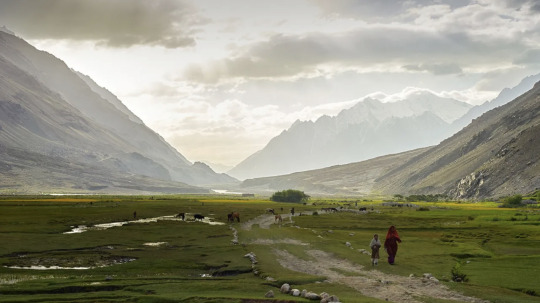
Untouched By Tourism
While Afghanistan's security situation dictates that much of the country is off-limits to foreigners, the corridor's relative safety, alongside its pristine mountain scenery and well-preserved Wakhi culture, has seen its appeal with off-the-beaten-trackers grow markedly in recent years. "At first there were only a handful of visitors," said Ade Summers, an adventure guide who has led nine expeditions to the Wakhan. "Over a decade, that's slowly grown to up to 600 people a year. It's a privilege to visit somewhere so untouched by mainstream tourism, where you can engage with people who still relish their traditional way of life. As you journey along the Wakhan, not only is it very beautiful, every step you take is like turning the pages of a fascinating history book." (Credit: Simon Urwin)

Part of the Silk Road
For hundreds of years, the Wakhan Corridor was an important route for merchants travelling along the Silk Road, the trade route that emerged in the 1st and 2nd Centuries BCE linking China with the Mediterranean. "Those merchants carried Chinese silk, Persian silver, Roman gold and Afghan lapis lazuli, mined here in the Badakhshan region," said Summers. "We find rock art detailing the road's history, such as petroglyphs of camels walking in single file as a trade caravan." Travellers and pilgrims followed in the merchants' footsteps. "Marco Polo is said to have passed through here on his way to China in the 13th Century, also Alexander the Great. We can still see the remains of historic travellers' shelters known as rabats, as well as ancient Buddhist stupas." (Credit: Simon Urwin)
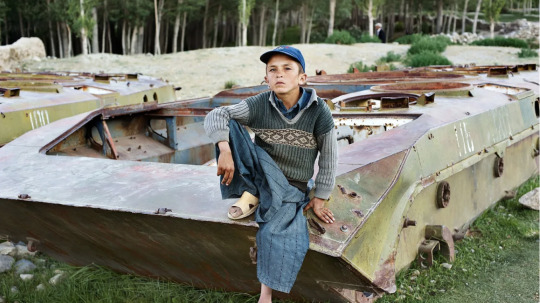
A Strategic Place
In the late 19th Century, the Wakhan Corridor played a key role in the so-called "Great Game" between Great Britain and Russia. "When the Russians and the British were fighting for control of Central Asia, Afghanistan was hugely strategic,", said Willcox. "The Wakhan's current boundaries were formed in 1893 to create a buffer zone to prevent both parties' territories from touching each other – in this case, the British Raj and the Tsarist Russian empire. It eventually turned an old trade route into a cul-de-sac. More recent, history has seen the Wakhan caught up in the Cold War; and now the latest changes in geopolitics will have perhaps an unexpected consequence, with China's Belt and Road Initiative turning it into an important trade route once again." (Credit: Simon Urwin)

New Construction
Until recently, the dirt track from Ishkashim reached only as far as Sarhad-e Broghil in the centre of the Corridor. Onward travel east was only possible by foot or with pack animals. Now though, with Belt and Road construction, the track has been extended by some 75km, as far as the village of Bozai Gumbaz, around three quarters of the way along the Wakhan. "It follows an old trading route that the Kyrgyz nomads take to get to Sarhad from where they live around Chaqmaqtin Lake," said Summers. "The bulldozers have come in, and while they've only constructed something the size of a farmer's track, the potential consequences are much bigger. The Chinese are said to be building the stretch that will eventually connect their border with Bozai Gumbaz, something that will open up the cul-de-sac once more. Ultimately, it will give China great access to the markets of Central Asia and beyond." (Credit: Simon Urwin)

Mixed Emotions
Ziahee says that the people of the Wakhan have mixed feelings about the road's potential impact. "Some things will be good for us," he said. "We will be able to buy goats from China which will be much cheaper than from the market in Ishkashim. We hope to have access to better healthcare, too. At the moment, many of our facilities are very limited. But we worry that the unique Wakhi culture and slow way of life will be changed forever. We love the silence and beautiful nature, but fear that it will be destroyed by traffic pollution. Building a road takes a long time in the mountains, but we think in the next year or so it will be completed. Both the Chinese and Afghan governments want it to happen. Only time will tell what the future holds for us as a result." (Credit: Simon Urwin)
5 notes
·
View notes
Text
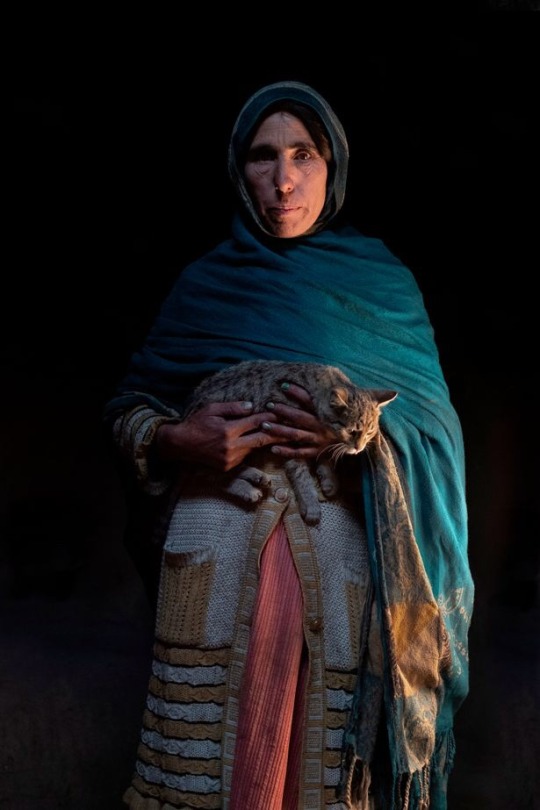
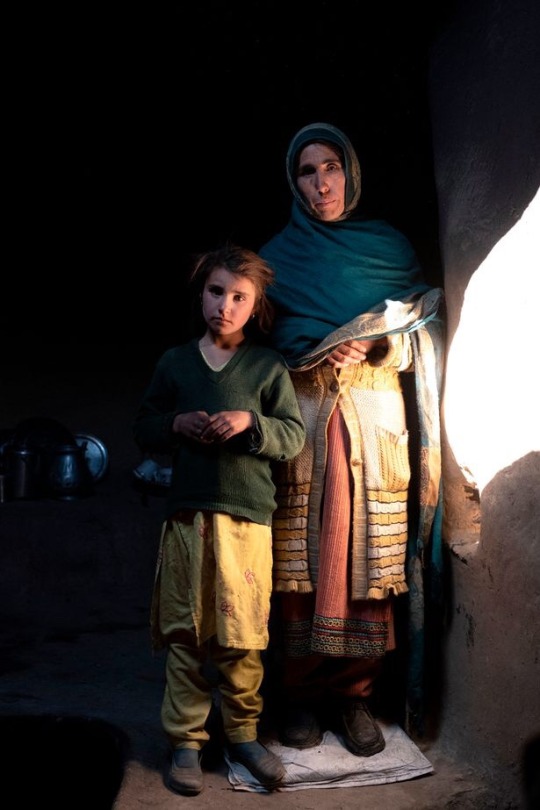

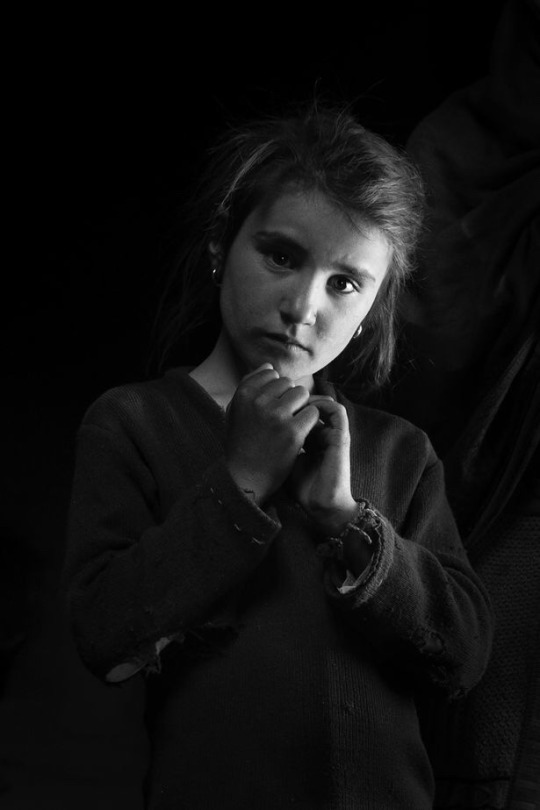
A few of the pictures taken by The Duchess of Cambridge in Pakistan.
The Duke and Duchess of Cambridge were travelling back from visiting a glacier in the Hindu Kush mountains when they spotted villagers, part of the Wakhi ethnic group.
According to reports, the Duchess asked to stop the car so she and William could meet them, at which point they were invited into the one-room home of one of the families.
Accompanied only by a translator, Kate and William learnt how they lived without running water and elecricity.
https://www.mirror.co.uk/news/uk-news/astonishing-pictures-kate-middleton-took-20658178
441 notes
·
View notes
Photo

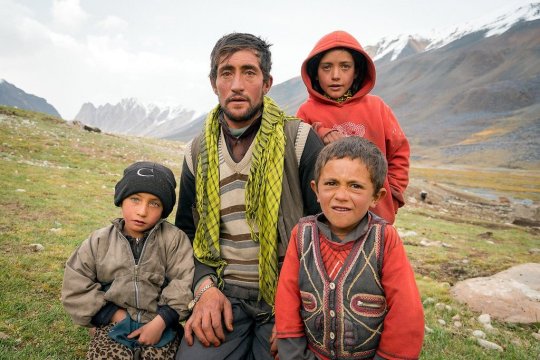
Wakhi Family Living in the Mountains by Matthew Karsten
42 notes
·
View notes
Photo




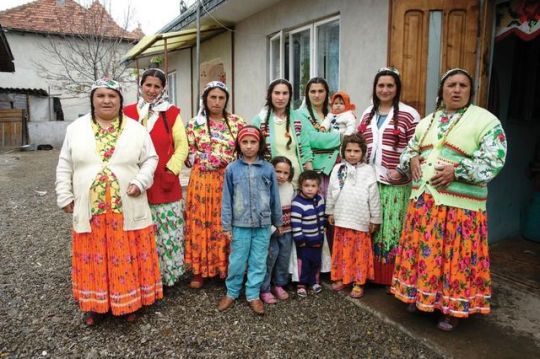
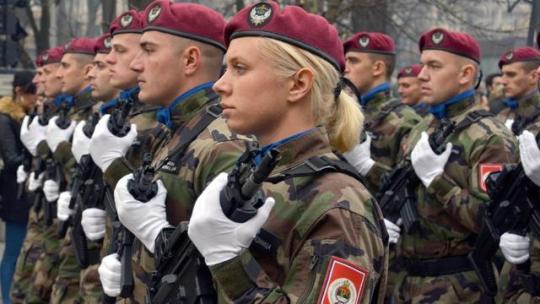
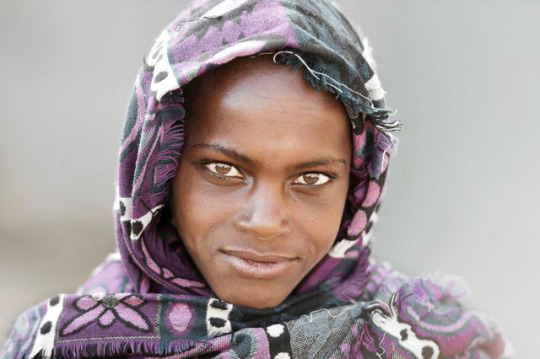
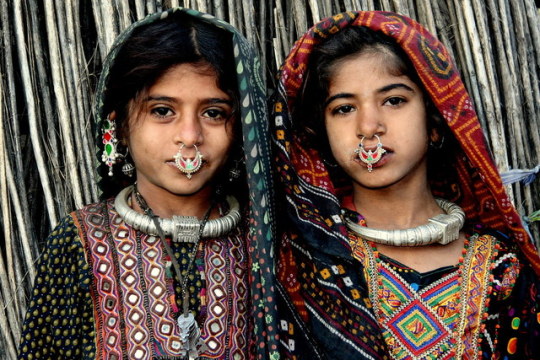

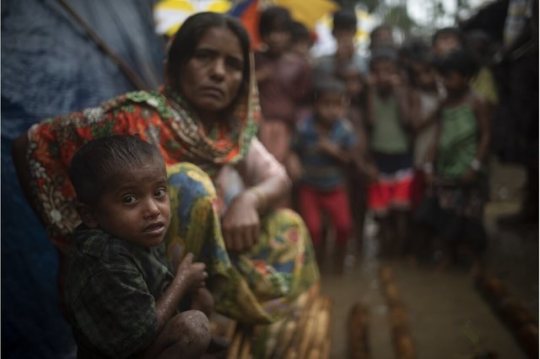
WHAT IS YOUR ETHNICITY 1.WHAT IS YOUR ETHNICITY? AMONG YOUR RACE WHAT IS YOUR INDIVIDUAL FAMILY GROUP DO YOU BELONG TO.   Underwood’s DNA test showed that he is a descendant of the Babungo people of Cameroon. Additional DNA testing and genealogical research revealed that his African ancestry comes from the Bamum, Brong and lgbo ethnic groups of Western Africa   BHIL PEOPLE OF ASIA   ROMA PEOPLE OF EUROPE   ZULU PEOPLE OF AFRICA   SLAVS PEOPLE OF EUROPE   SPANIARDS OF EUROPE   SAMI PEOPLE OF EUROPE   AMAZIGH PEOPLE OF AFRICA   AMHARA PEOPLE OF AFRICA   PASHTUN OF ASIA   PASHAYI PEOPLE OF ASIA   WAKHI PEOPLE OF ASIA   TIKAR PEOPLE OF AFRICA   MASA PEOPLE OF AFRICA   Krio people from Sierra Leone, Yoruba people from Nigeria and Limba people from Sierra Leone 
#krio#krio people#sierra leone#yoruba#limba#africanancestry#african ancestry#european ancestry#asian ancestry#africans#asians#europeans#euroasia#masa#tikar#cameroon#wakhi#wakhi people#pashayi#pashtun#pashtun people#amhara#amhara people#roma#romain#roma people#zulu#zulu people#oromo#oromo people
356 notes
·
View notes
Text
I’m researching Nanda Parbat, the League of Assassin’s base, for a fanfic I’m writing and I’m quite fascinated.
So Nanda Parbat is fictional, obviously, located in the not fictional mountain range of Hindu Kush. These mountains are located in Afghanistan, mainly, as well as Pakistan and Tajikistan.

Now, the exact reason for why I’m researching this is because I wanted to know what language exactly would be most likely spoken among the people in Nanda Parbat. In fandom, we tend to just say “Arabic” because Ra’s is Arab, right? And his name is in Arabic?
It’s not quite that simple.
Arabic isn't the official langue of any of these countries. In Afghanistan, the most commonly spoken language is known officially as “Dari.” Dari is also often called Farsi, and is a variety of Persian. 80% of the population in Afghanistan speaks Dari. The second most commonly spoken language is Pashto, spoken by 47% of the population. Only 1% of the population speaks Arabic.
In Pakistan, the official languages are English and Urdu. This isn’t very helpful, though, because less than 10% of the population speaks Urdu as their first language, and English isn’t common enough as a first language to even make the chart I’m looking at. Urdu is the most understood language, however, with about 75% of the population speaking it. According to wikipedia, English is spoken in government, mainly. Pakistan is very much like India, where what language is spoken predominantly depends on where you are in the country.
So, looking at the map, we can figure that in the Hindu Kush mountains, the languages in the Pakistan are: Khowar, Burushaski, and Wakhi. Combined, these three languages have fewer than 600,000 speakers in the world. Khowar and Wakhi both branch off the Eastern Iranian language family, but Burushaski hasn’t been connected to any branch.
In Tajikistan, the official language is Tajik, which is a variety of Persian. (On a side note, Persian is also often called Farsi.). Russian is also a common language, due to Soviet occupation, but that would be a whole different post digging into politics and history. It’s safe to claim Tajik as the primary language of Tajikistan.
So, With all that, what language would be most common among the recruits for the League? Well, your guess is as good as mine.
It’s possible that Arabic is, indeed, the official language of the League. Much in the same way Urdu is in Pakistan. It is not a first language, but rather, a second, and is what all recruits learn and speak upon joining.
But as for the most common first language? I’d wager it’s Farsi.
#I don't know why I wrote it#this is how I worked it through actually#so there#take it with a grain of salt#someones probably gonna respond with a comic panel and go WELL ACTUALLY#and show me exactly why fandom goes with arabic#but whatever
132 notes
·
View notes
Photo

Moving Flocks. Early morning, on our way to the Little Pamir. 5th day walk. We brought the yack herd of our hosts out to the pastures. Wolves are less a threat for yaks and can be left for some while without surveillance. Herding necessitates however constant management, impossible to leave the camps fo a while. If Afghan Kyrgyz settled the Little Pamir, it is a greater issue for Wakhi who leave families for 6-8 months a year down in the lowlands. Small camps of men only from which curious jokes and stories abound. #Afghanistan #Pamirs #Wakhan #Solitude #Herd #Yak #walk #mountains #longdistancelove (at Vakhan, Afghanistan) https://www.instagram.com/p/B3rpEeJoP7Q/?igshid=znc4pdd1bw4i
1 note
·
View note
Text
...
Wakhi family in Kala-e Panja, in the Wakhan Corridor, Badajšán.
Photo by @raulbarrero
Afghanistan 🇦🇫 #raulbarrero #raulbarrerophotography #wakhancorridor #wakhan #afghanistan #badajšán #people #portrait #travel @people_infinity_ @kings_portraits_ @natgeo #earth_focus #humanpotrait #family #humanity_shots⠀
⠀
⠀
⠀
⠀
⠀
⠀
⠀
⠀
⠀
#everydayeverywhere
#afghandiaries
#beautifulafghanistan
#travelphotography
#travelgram
#documentaryphotography
#afghankid
#Afghanistan #helmand #everydayafg #everydayafghanistan #everydaykandahar #afghanculture #Kabul #Afghanistan #AfghanistanAfterAmerica
instagram
0 notes
Text
Two-day Broghil festival to kick off on Sept 5.
CHITRAL: The two-day Broghil festival will kick off from Sept 5 at the Broghil National Park in Upper Chitral district bordering the Wakhan corridor of Afghanistan in the extreme north.
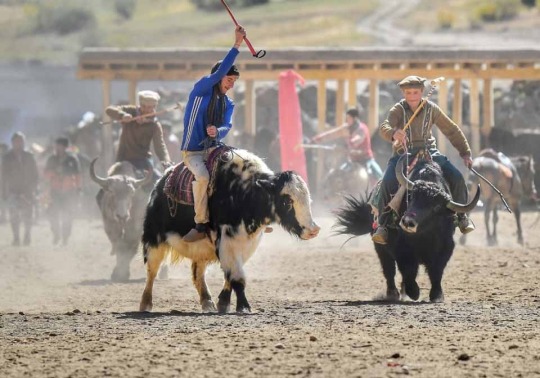
Being organised by the Khyber Pakhtunkhwa Tourism Department and the Upper Chitral district administration, the festival will showcase various activities, including horse and yak polo, cricket, football, Buzkashi, marathon race, tug-of-war, wrestling, music and other traditional games.
Buzkashi is an ancient Asian game in which a dead goat is pulled by a player while riding a horse.
He is declared the winner if he succeeds in carrying it around the ground without being snatched by other players.
Upper Chitral deputy commissioner Shah Saud said the festival was the first event being held during the calendar year as the earlier ones, including the Shandur festival, were cancelled due to Covid-19.
He said arrangements were being made for highlighting different aspects of the ancient and unique Wakhi culture, while a tent village would be established in Broghil to facilitate the participants and tourists.
JAIL REFORMS: Special assistant to the chief minister on prisons, Taj Mohammad Khan Tarand, has said the Pakistan Tehreek-i-Insaf government is making concrete efforts to introduce jail reforms aimed at making the inmates constructive and useful members of society after their release.
Addressing media persons after a visit to the district jail on Friday, he said the provincial cabinet had recently approved setting up industries in jails of Peshawar, Haripur and Mardan to provide employment to hundreds of prisoners to help them feed their families even from behind the bars.
He said the industrialisation process in jails would be extended to all the districts so thousands of prisoners might leave the jails as skilled persons to be able to earn a living for their families instead of restarting criminal activities.
Accompanied by IG prisons Masoodur Rahman, CM’s aide Wazirzada and local MPA Maulana Hedayatur Rahman, the CM’s assistant visited different portions of the jail, including the barracks housing women and juvenile prisoners.
He directed reducing jail terms of the inmates by two months, and provision of a heating facility to them during winter.
Earth Pakistan Property Portal
1 note
·
View note
Text
Some stories made us proud to be Pakistanis!

Do you know who are the proud of Pakistan? I don’t know if I am wrong or right but I think now a days by facing many difficulties in our daily lives somewhere we all easily get disheartened. At some point many of us get hopeless and disappointed from the nature and from the society. But there are so many people exist who after saw the worst part of their lives are still full of life and became an example for others. Because of their courage and hard work they are in the list of the people who are proud of Pakistan's.
To see such people who never lose hope at any point any keep struggling and battling with their problems can learn many things and motivate us. In previous years there are some stories happened which left us so proud for the rest of the world. You may have heard about them somewhere or from someone but even after let’s come and talk about them once again.
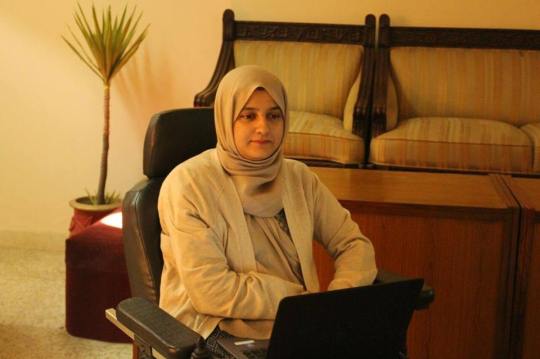
Dr.Anum Najam-A Survivor:
Dr.Anjum who went to become Pakistan’s first Quadriplegic physycetrist. In 2008 Dr.Anjum and her family was on their way to Muzaffarabad from Rawalpindi when out of nowhere a group of armed robbers opened fire to stop their vehicle. One bullet fired at Dr.Anum’s neck and was sop in the middle which causing a spinal cord injury that paralyzed her entire body from the bottom of the neck.
In that hard time when she was fighting with the pain she didn’t give up neither she lose hope and she recovered. After her recovery, she continued her education and without any second thought completed her MBBS. 2016 was the year when Anum became the Pakistan’s first Quadriplegic psychiatrist.
Raffia Qaseem Baig:
She belonging to the KPK province, in 2009 she joined Pakistan’s police force as constable. When she was on a first day at her job, a bomb exploded near the session court. Attending the bombsite by itself and after seeing the massacre she decided to apply to bomb disposal unit.
That was not that much easy to join as expected the organization did not except her request, but she did not give up and fought against resistance within the organization. Her efforts have worked and on permanent basis she was finally allowed to join the squad.
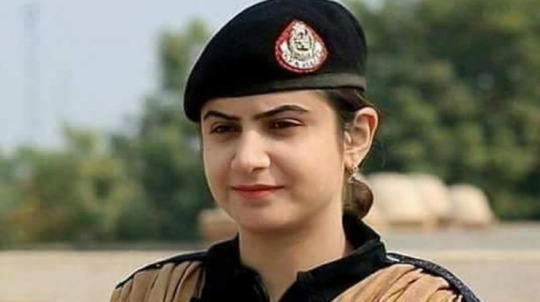
This was the first time in the history of Pakistan that Raffia became the first woman to join ABU. Though she already done her master in Economics and International Relations but she didn’t stop there and continue her further study in LLB from the university of Peshawar.
Fayeem Avzl son of an Ambulance Driver:
Ability is not someone’s legacy. Talent is a God gift which he can give to any one without distinction of rich poverty. Fayeem Avzl is a son of an ambulance driver proved that to get successful in life all you need to do is hard work, patience and commitment. He was a student of National college of Arts (NCA) but soon after he realized that his passion is something else so he decided to dropout to chase his love for film making.
At School of Creative Arts he was working with juniors, in short time of period Fayeem established his reputation as one of the most creative people around. One acclaim leading to the other, it motivated Faheem and he gave birth to his own short film. He made this short film in Hunza valley and the story is about the determined shepherdess who desolates her home to live in the grazing land with cattle.

His short film name is The Last of the Wakhi Shepherdess which won two awards, one in Bulgaria and one in Russia by the early film festival 2016.
Conclusion:
There are many other heroes who belong to different fields of work made Pakistan proud. These people made the rest of us proud by their achievements. We all can be a proud moment for Pakistan just what all we need is hard work, will power, and commitment.
Read the full article
#Achievements#Commitments#Courages#HardWork#Heroes#pakistan#ProudMoments#ProudPakistanis#Survivors#Talents
0 notes
Text
Unseen Beauty of Hunza Valley
The Hunza is a mountainous valley in the Gilgit–Baltistan region of Pakistan. The Hunza is situated north/west of the Hunza River, at an elevation of around 2,500 metres (8,200 ft). The territory of Hunza is about 7,900 square kilometres (3,100 sq mi). Aliabad is the main town while Baltit is a popular tourist destination because of the spectacular scenery of the surrounding mountains like Ultar Sar, Bojahagur Duanasir II, Ghenta Peak, Hunza Peak, Passu Peak, Diran Peak and Bublimotin (Ladyfinger Peak), all 6,000 metres (19,685 ft) or higher.
Hunza was formerly a princely state bordering Uyghurstan to the northeast and Pamir to the northwest, which survived until 1974, when it was finally dissolved by Zulfikar Ali Bhutto. The state bordered the Gilgit Agency to the south and the former princely state of Nagar to the east. The state capital was the town of Baltit (also known as Karimabad); another old settlement is Ganish Village. Hunza was an independent principality for more than 900 years. The British gained control of Hunza and the neighbouring valley of Nagar between 1889 and 1892 through a military conquest. The then Mir/Tham (ruler) Mir Safdar Ali Khan of Hunza fled to Kashghar in China and sought what would now be called political asylum.
The ruling family of Hunza is called Ayeshe (heavenly). The two states of Hunza and Nagar were formerly one, ruled by a branch of the Shahreis, the ruling family of Gilgit, whose seat of government was Nager. First muslim came to Hunza-Nagar Valley some 1000 years (At the time of Imam Islām Shāh 30th Imam Ismaili Muslims). After the introduction of Islam to Gilgit, married a daughter of Trakhan of Gilgit, who bore him twin sons, named Moghlot and Girkis. From the former the present ruling family of Nager is descended. The twins are said to have shown hostility to one another from birth. Thereupon their father, unable to settle the question of succession, divided his state between them, giving to Girkis the north/west, and to Moghlot the south/east bank of the river.
Today, the Karakoram Highway crosses Hunza, connecting Pakistan to China via the Khunjerab Pass, although blocked by the Attabad Lake north of Hunza. Travelling up the valley from the south, Hunza is to the left, and the former state of Nagar to the right of the Hunza River. Regular bus and van services operate between Gilgit and Central Hunza (Ganish Village, Aliabad and Karimabad) and also between Gilgit and Sost Gojal. PTDC Office at Gilgit, Sost and Islamabad arranges tours and transport for visitors. NATCO (Northern Area's Transport Co) runs a daily bus from Rawalpindi to Hunza.
Several high peaks rise above 6,000 metres (20,000 ft) the Hunza valley. The valley provides views of several tall mountains, including Rakaposhi 7,788 metres (25,551 ft), Ultar Sar 7,388 metres (24,239 ft), Bojahagur Duanasir II 7,329 metres (24,045 ft), Ghenta Sar 7,090 metres (23,261 ft), Hunza Peak 6,270 metres (20,571 ft), Darmyani Peak 6,090 metres (19,980 ft), and Bublimating (Ladyfinger Peak) 6,000 metres (19,685 ft). A watch tower is located in heart of Ganish Village, Baltit Fort stands on top of Karimabad whereas Altit Fort lies somewhat lower down the valley on another outcrop. The valley is popularly believed to be the inspiration for the mythical valley of Shangri-la in James Hilton's 1933 novel Lost Horizon.
The local languages spoken include Burushaski, Wakhi and Shina. The literacy rate of the Hunza valley is believed to be more than 95%.[4] Virtually every child is educated up to at least high school level. The Life style of People of Hunza is very simple and they are considered to be very warm and welcoming.
Most of the inhabitants of Hunza are Ismaili Shia Muslims, followers of His Highness Prince Karim Aga Khan IV, while in Ganish more than 65% are Shia Muslims.
The Hunza region is principally home to people of four ethnicities:
The Lower Hunza area - from Khizerabad to Nasirabad is mainly inhabited by the Shinaki people who are Shina speakers.
The Central Hunza area - from Murtazaabad to Attabad is mainly inhabited by Burushaski speakers, however, there is a centuries-old locally inhabiting community as well that is known as the 'Domaki' which lives in a village lying in the immediate vicinity of 'Baltit' called 'Mominabad'.
The Upper Hunza area, known as Gojal - from Shiskat to Khunjerab is mainly populated by Wakhi speakers and burusho speakers.
#Passu Peak#Pakistan#Islamabad#Hunza Valley#Hunza River#Hunza Peak#Gilgit–Baltistan#Gilgit#Beautiful Pakistan
0 notes
Photo

Guest in a kind Wakhi family. Sarhad e Brogil, Wakhan Corridor, Badakhshan,Afghanistan
Taken on August 12, 2016
PayPal Donation: [email protected]
27 notes
·
View notes
Text
Hunza the Land of Beauty and Culture
Hunza valley is located in the north of Pakistan. This Valley is Famous for multiple reasons including lush greenery, Land of Glaciers, historical background and most beautiful Cherry blossom view in spring and autumn in the month of October and November. Hunza Valley is divided into 3 parts.
Upper Hunza Gojal
Central Hunza
Lower Hunza
Famous Places to Visit in Hunza Valley
Karimabad
Nagar Valley
Hopper Valley
Sost Border
Gulmit Valley
Duikar Valley
Khunjarab Pass
Gojal Valley
Karimabad:-
Beautiful Valley of Karimabad is the Capital of Hunza Valley. This is the rich and strong historical region. Its most famous places are
Baltit Fort
Queen Victoria Monument
Channel Walk
Altit Fort lies above karimabad in Hunza Valley.
Nagar Valley:
This beautiful Valley is also known as Nagar Khas. Rush Lake is Located in Nagar Valley, which is a high altitude lake. Another Beauty of Nagar Valley is Hopper Village which is famous for its hopper glaciers along with its scientific view.
Another famous place spantik also known as Golden Peak lies in between Nagar Valley.
Sost Border:
It is the Last Village of Hunza Village of Hunza Valley on Karakoram highway. All the Crossing of Passengers and cargo transport between Pakistan and China passes through the highway of this town.
Gulmit Valley:
This valley is also known as Valley of Flowers and Valley of Nine Colours. Birth Lake is Located in this valley. It is also famous for its paramonic view of Passu Cones.
Duiker Valley:
This Valley Lies above the Altit Village. It is famous as a viewpoint. It is often referred to as the Eagle Nest. It gives a viewpoint for Rakaposhi and Lady Finger.
Gojal Valley:
This Valley is Famous for a beautiful lake known as Attabad Lake. It was created as a result of the Attabad disaster in Jan 2010. It is one of the biggest tourist attractions offering many recreational activities.
Khunjarab Pass:
It is the high mountain pass in mountains heading towards Pak China border. There is also a National Park where lies a rear species of now Leopards.
Best time to Visit Hunza Valley.
The time to visit Hunza Valley is March to October. But it becomes rushy during peak summer because the temperature becomes warm at that time.
Best Time to see the beautiful cherry blossum in Hunza Specially in Karimabad is mid of March till the end of April.
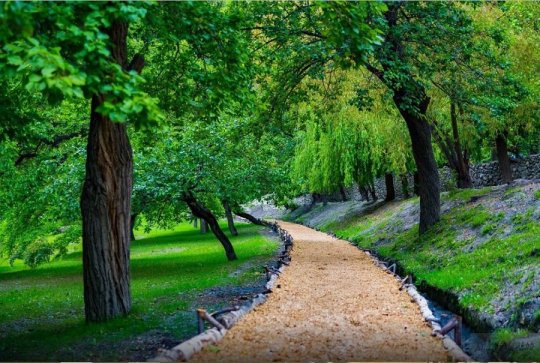
How to Visit Hunza valley:
Nowadays there are different travel agencies that are providing packages and tour operators for Hunza Valley. By taking their Hunza tour Packages you can visit the whole Hunza valley at a reasonable price and way even in a rushy day.
Famous Peaks in Hunza Valley:
The Famous peaks of Hunza Valley are
Diram Peak
Rakaposhi Peak
Golden Peak
Ultar Peak
Famous Local Foods of Hunza Valley:
Hirisa
Biyagno Fasanjoon
Feyok Shaa Moskut
Ab-shaa
Shakkurba
Furus Fulka
Palapu
Mamtu
Lhmnd
Chapshuro
Gyal
Local dress of Hunza Valley:
Like most other areas of Pakistan men in Hunza Valley wears shalwar kameez and the Women wear long frocks with shalwar. The thing which makes different is the round cap, which is part of the dressing of both men and women.

People of Hunza Valley:
Like people of the entire Gilgit Baltistan people of Hunza valley are very friendly. People are always ready to help each other as well as outsiders.
Hunzaie keeps their places very clean. There is no security issue in Hunza Valley as it is the safest place in Gilgit Baltistan.
Women’s in Hunza Valley:
Women’s in Hunza Valley are very versatile. They do all the chores of their houses and also runs a small business. They a run various business-like
Making and selling Wooden Handicrafts.
Selling Gem Stones of their Mountains.
Selling Soveneigers.
Seling Woven things.
Selling Local Dry Fruit.
Selling Famous Local dishes on the streets.
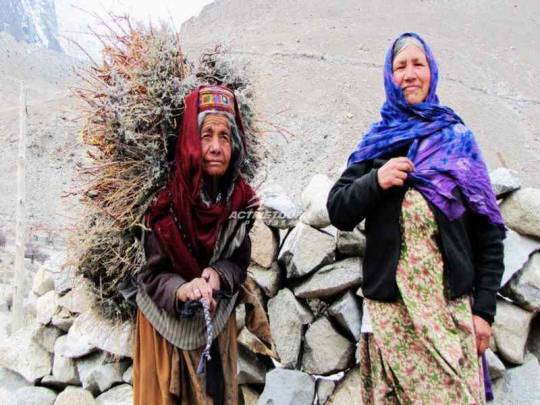
Languages in Hunza Valley:
Local languages of Valley are
Burushaski
Shina Language
Wakhi Language
Literacy rate of Hunza Valley:
The Literacy rate of Hunza is more than 77%.
Average Age of Hunzai peoples.
Average Life Spam of People of Hunza is a hundred and twenty years and time may exceed up to 150 years.
This blessing is because of Organic food, homemade oils and a healthy lifestyle.
Crops and fruits of Hunza Valley.
Major crops of this village are:
Wheat
Barley
Potatoes
Major Fruits of Hunza are:
Apple
Apricot
Cherry
Mulberry
Pear
plum
Strawberry
Almond
Main Festival of HunzaValley:
Annual Crop harvesting festival is known as “Ginani” is celebrated in Hunza Valley on 21st June.
Religions in Hunza Valley:
People of Hunza Valley are divided into two groups in terms of religion.
Ismaili Muslims
Shia Muslims
Ismaili Muslims:
These Peoples are the followers of Prince Aaga Khan These peoples have a great impact on Prince Aaga Khan on their lives. They are very much well behaved open-minded open hearts and happiest people of Hunza. They strongly believe in women’s empowerment.
Prince Aaga Khan has a great contribution to the education and health sector. Their major effort is to preserve and restore the culture of Gilgit Baltistan especially in Hunza in the form of Altit & Baltit Fort.
In Altit Fort no of old women’s of the village come towards a specific is where they spend most of their day time by taking rest and gossiping with each other. No Children and men are allowed to that specific part of the fort.
Wrinkles on the faces of these beautiful ladies are telling various stories of ancient times.
Navroz Festival:
This is a huge festival celebrated worldwide by Ismail Shia Muslims. It is celebrated on 21st March at the beginning of spring.
These people recite poetry like Qasidas and Manqabas in their Jammat Khan. Dried nuts, fruits, and grains are distributed among the members of Jammat Khana.
At the time of Navroz festival families arranges gettogether to celebrate meals and to bond strongly with each other.
Games in Hunza:
There are various games played by hunzaie people but like the entire Gilgit Baltistan “Polo” is the most famous game of Hunza which was also played at the time of Raja’s large playgrounds are present in entire Gilgit Baltistan as well as in Hunza for Polo practices and festivals. Mostly National level players of polo belong to Gilgit Baltistan as they started to play it from their Childhood.
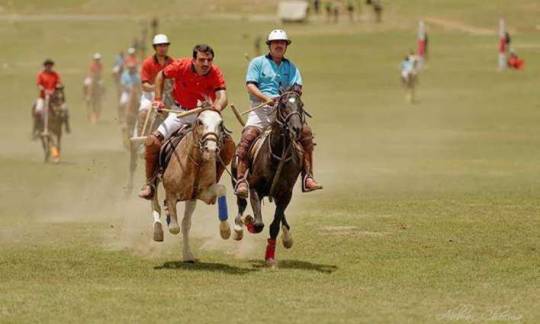
Why to Visit Hunza Valley
If you are found of History, culture nature than the phrase of “All in 1” is perfectly applicable to Hunza Valley. It is the most beautiful land of Glaciers, lakes Mountains as well as Fruitful trees.
Its beauty increase because of humble residents and versatile culture.
0 notes
Video
youtube
Gilgit Baltistan Tradition The cultural heritage of Gilgit Baltistan, Pakistan is rich, beautiful and unique and it manifests in local traditions, music and local dress. The dress plays a central role in identity of a person. Traditional clothing of the region is influenced by local culture, geography and weather. The traditional cap of Gilgit Baltistan has played a major role to define the identity of people of Gilgit Baltistan. The cap has different names in the major local languages. In Shina and Khowar languages the cap is called Khoi ,in brushaski it is called Phartsun or Pharsen and in Wakhi it is called Sekeed. The design of cap is slightly different in Baltistan and it is called Nating in Balti. Tradtional cap is soft round toped woolen hat. It is made by local artisan and is available in various colors. White caps are most popular in the region and considered as a part of formal local dress. In many areas people specially the older generation still wear their traditional cap all the time with pride. They consider it a sign of honor. The most striking feature of the cap is the peacock plume and the feather stuck in front or on the side of the cap. It gives a very elegant look to the cap. It is considered a part of formal dress cap and used in groom’s dress. In many parts of Gilgit Baltistan a small fresh flower is stuck in front and side of the the cap. Flower is a symbol of freshness, fragrance and livelihood. When the spring season starts sometimes the farmers and shepherds stuck a pine tree leave to symbolize life. On of the custom of many regions in Gilgit Baltistan is to stuck money into the cap while someone is dancing. This symbolizes the love and respect to the dancer from his friends relatives and fans. The dancer gives this money to the musicians once the dance is finished. A variety of cultural festivals held in Gilgit Baltistan throughout the year present an exclusive facet of its cultural assortment and different forms of expressions. These festivals represent a number of important recurring merriment, cultural events and religious festival brings value additions to the surroundings. The folk music instruments commonly used in Gilgit Baltistan are Dadang (drum) Damal (percussion) Duff (a circle framed drum) Suranaye(a kind of flute) Ghajak (spiked fiddle) Sitar, Rubab and Gabi (flute). A majority of the people in Gilgit Baltistan prefer to live in a joint family, which could comprise anywhere between a group of two or more, even over 20 members sometimes. The commanding position in a family is held by the eldest earning male member. He consults other adult members on important issues, but it is his decision that ultimately prevails. However, a lot of importance is also given to the advice of the eldest retired members of the family. It is the duty of woman to take care of her home. As such, from her very childhood, a girl child is taught cooking, cleaning and dish washing by her mother and other ladies in her family. She is also taught to attend to guests and strangers politely and elegantly because it is thought to greatly reflect upon her upbringing. The traditional arranged marriage has long been an integral part of the Gilgit Baltistan culture as against love marriage. It is the concept in which the parents and family members search for the prospective bride or groom, through their acquaintances or relatives. ►Website https://ift.tt/2mNTMsg ►Twitter https://twitter.com/urdugb ►YouTube https://www.youtube.com/channel/UCWS6Q77iel-quE-ZiV7gieA ►Facebook https://ift.tt/2lTqBUt ►Instagram https://ift.tt/2mNgP6z ►WhatsApp https://ift.tt/2mQaOG3 ►Pinterest https://ift.tt/2nqJPRN ►Reddit https://ift.tt/2lHpnvz ►Email [email protected] #shinasongs #burushaskisongs by GB News & Music
0 notes
Text
Hunza valley
The Hunza is a mountainous valley in the Gilgit-Baltistan region of Pakistan. The Hunza is located north / west of the Hunza River, at an altitude of approximately 2,500 meters (8,200 feet). The territory of Hunza is approximately 7,900 square kilometers (3,100 sq mi). Aliabad is the main city, while Baltit is a popular tourist destination due to the spectacular scenery of the surrounding mountains such as Ultar Sar, Rakaposhi, Bojahagur Duanasir II, Ghenta Peak, Hunza Peak, Passu Peak, Diran Peak and Bublimotin (Ladyfinger Peak), all 6,000 meters (19,685 ft) or higher.
Several high peaks rise above 6,000 meters (20,000 feet) in the Hunza Valley. The valley offers spectacular views of some of the world's most beautiful and beautiful mountains, including Rakaposhi 7,788 meters (25,551 feet), Ultar Sar 7,388 meters (24,239 feet), Bojahagur Duanasir II 7,329 meters (Ghent Sar 7,090 meters) (23,261 ft) ), Hunza Peak 6,270 meters (20,571 ft), Darmyani Peak 6,090 meters (19,980 ft) and Bublimating (Ladyfinger Peak) 6,000 meters (19,685 ft). A watchtower is located in the heart of Ganish Village, Baltit Fort stands at the top of Karimabad while Altit Fort is slightly lower in the valley on another layer of the earth. Hitch A Hike offers Cheap Lahore Tour Packages 2019.
Altit Baltit tour
Visit the newly restored Baltit fort. The fort offers a tour with an emphasis on the history of the Hunza valley and the architecture of the Baltit fort, which was made about 600 - 400 years ago by Tibatan artisans brought by Mir of Hunza's wife. Late in the evening we will take an easy walk in the bazaar of Karimabad, then we will drive to Altit, which is actually being renovated. If you wish, we can also visit a school in Hunza or visit a family home in Hunza.
Drive by jeep to the spectacular Nagar valley over the Hunza river. Jeep ride is great. You see beautifully landscaped terraces for various crops and orchids. Jeep passes through the villages and the fruit orchids. At Hoper you go down and look at the Hoper glacier. If you feel like you can walk to the glacier and have a beautiful view of Kapal & Golden peaks.
Attabad Lake
Attabad Lake, Gojal, also known as Gojal Lake [4], is a lake in the Gojal Valley in northern Pakistan, created in January 2010 by a landslide dam.
The lake was formed as a result of a huge landslide in the Attabad village in Gilgit-Baltistan, 14 km upstream (east) of Karimabad, which took place on January 4, 2010. The landslide killed 20 people and blocked the flow of the Hunza river for five months. The flooding of the lake drove 6,000 people from upstream villages, stranded (from land transport routes) and another 25,000, and flooded over 19 km (19 km) of the Karakoram Highway. The lake reached 13 miles (21 km) long and more than 100 meters (330 ft) in depth by the first week of June 2010, when it began to flow over the landslide dam, completely submerged in the lower Shishkat and partly under flowing Gulmit. The subdivision of Gojal has the largest number of flooded buildings, more than 170 houses and 120 stores. The residents also had a shortage of food and other items due to the blocking of the Karakoram Highway. By June 4, the water drainage from the lake had increased to 3,700 cu ft / s (100 m3 / s).
People from Hunza
The local languages that are spoken are Burushaski, Wakhi and Shina, although most people also understand and speak Urdu. The literacy of the Hunza valley is supposed to be more than 95%. Hunza has been described as a "role model" for Pakistan in terms of high literacy rates and enrollment rates for schools. Almost every child is trained to at least the level of high school.
Most residents of Hunza are Ismaili Shia Muslims, followers of His Highness Prince Karim Aga Khan IV, while in Ganish more than 65% are Shiite Muslims.
0 notes
Text
GISAK organized music and cultural festival in Karachi
KARACHI: The Karachi-based association of students from Gojal organized a music and cultural festival for the youth and families of Gojal, residing in Karachi. Music, dance, skits and other traditional and educational items were performed by local artists.
Renowned singers, including Fazal Rehman (Shireen Sado), Kashif Sakhi, Juma Khan Aasi, Nousheen and Shahbul Aziz sang songs in Wakhi and…
View On WordPress
0 notes